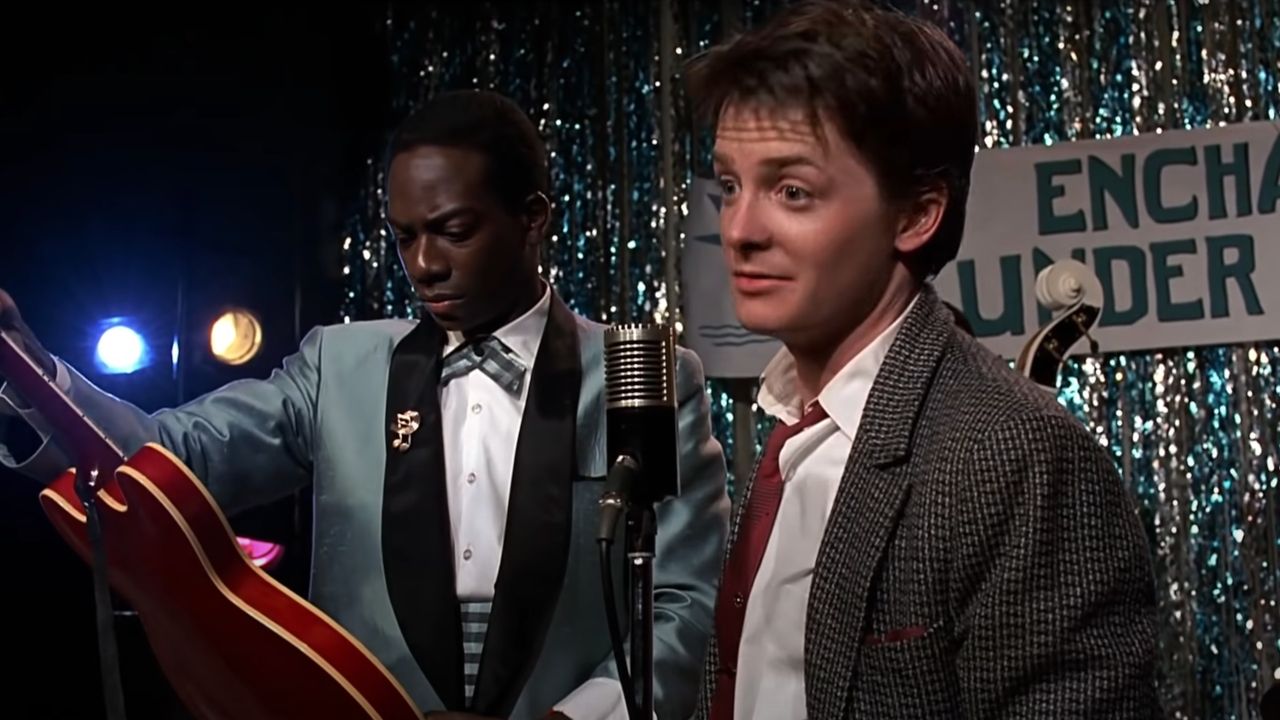Copyright CinemaBlend

For 40 years, people have been discussing the time travel inconsistencies in Back to the Future. People, especially on the internet, love to talk about how time travel works in movies. One of the more ridiculous examples, in my opinion, comes from the 1985 mega hit, and it involves the Gibson ES-350 that Marty (Michael J. Fox) plays “Johnny B. Goode” on at the Enchantment Under The Sea dance in 1955. It’s not a fault of the time travel, but actually a decision made by the art department on the film. Fox talks about the “controversy” in his new memoir. The Guitar In The Movie Wasn’t Released By Gibson Until 1958 Fans of BTTF know that Marty travels from October 26th, 1985, back to November 5th, 1955. In his attempt to make sure his parents fall in love at the right time, keeping the timeline of the future consistent, Marty stands in for Marvin Berry in the band at the dance. He borrows Marvin’s guitar, a semi-hollow body, model number ES-345. Gibson is renowned for its ES series; the first, the ES-150, was introduced by the company in 1936. Gibson has been producing ES guitars ever since, with dozens of models over the years. The problem that guitar aficionados love to point out is that the ES-345 model, like the one in the movie, wasn’t introduced to the market until 1958, three years after the Enchantment Under the Sea Dance. In his book, Future Boy: Back to the Future and My Journey Through the Space-Time Continuum, via Syfy, Fox writes about: According to Fox, a debate has raged over whether this “inconsistency” was intentional or not. That debate has been settled now. It was not a quirk of time travel, it wasn’t even planned: That’s it. It was just the prop that was chosen because it resembled a guitar that Chuck Berry would play, though he was famous for playing other models, most notably an ES-350T. But since we’re on the topic of inconsistencies, let’s talk about the song Marty plays and Marvin’s phone call to his “cousin” Chuck Berry (Marvin is a fictional character). ‘Johnny B. Goode’ May Have Been Written Before The Dance, Too Chuck Berry recorded his iconic hit “Johnny B. Goode” in late 1957, and it was released in 1958 (coincidentally, the same year the Gibson ES-345 was introduced). It was reported written a couple of years early, or, at least, started being written in 1955. So that “new sound” that Chuck was looking for, according to Marvin, had probably already been discovered by Berry by the time the dance happened in November of ‘55 Furthermore, Berry recorded another one of his most iconic songs, “Maybellene,” in May 1955 at Chess Records’ studio in Chicago and released it in June, five months before the dance. “Maybellene” doesn’t have a legendary opening riff like “Johnny B. Goode,” but it’s definitely in the style Chuck Berry would become world famous for. The Famous Riff Is Even Older That’s not all, Berry himself acknowledged that he was “inspired” by the riff that opens the song “Ain't That Just Like a Woman,” by Louis Jordan, which was recorded in 1946! All it takes is one listen to determine that the riffs are almost identical. It’s safe to assume Berry already knew the riff and was likely even playing in concert in one way or another in the months and maybe years before Marvin’s phone call in 1955.



